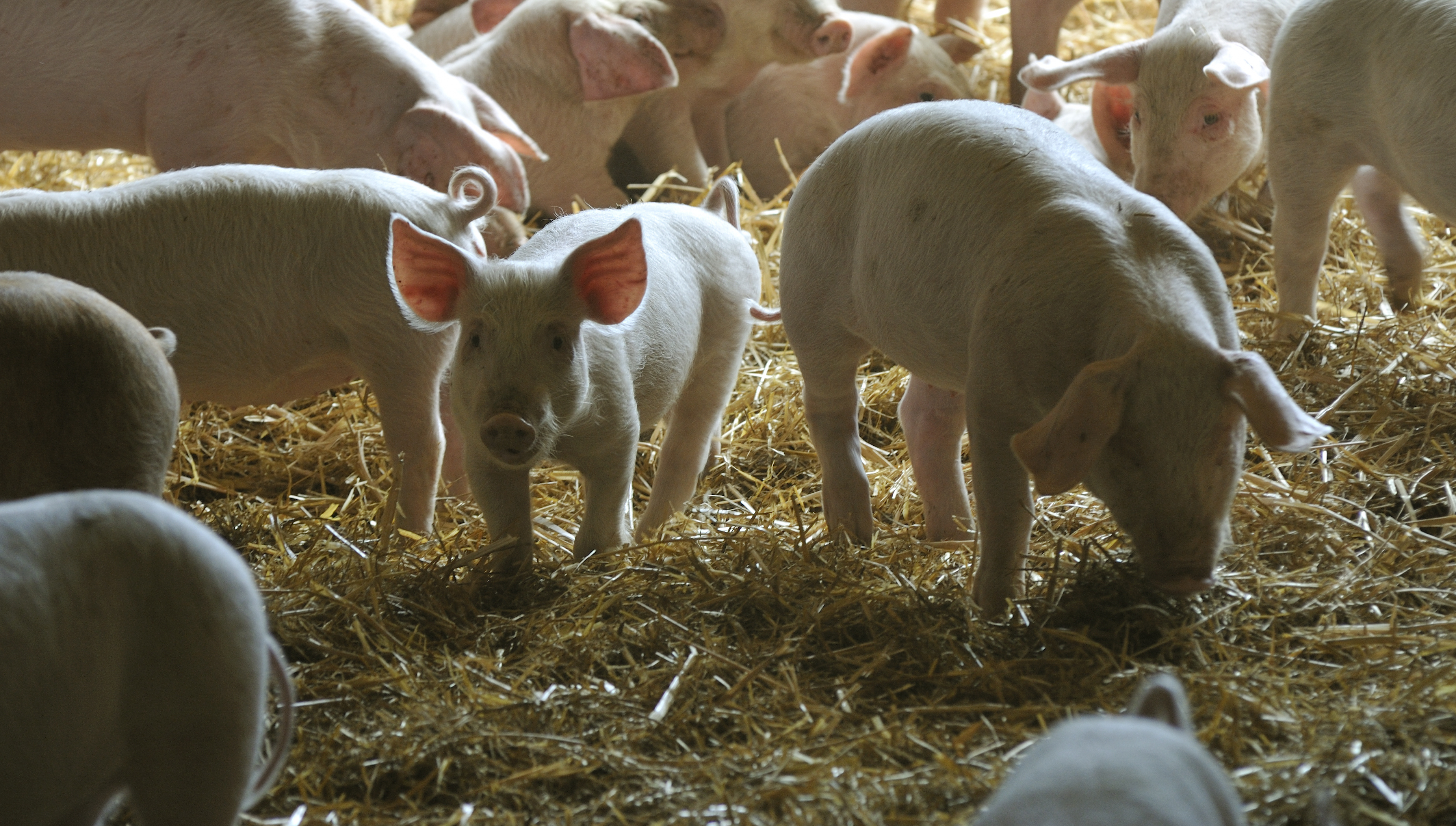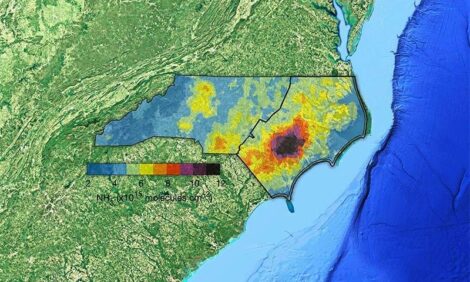



Are you missing out on the productive benefits of straw in pig farming?
New research shows that providing 500g of straw per pig per day in concrete-floored group pens can improve average daily weight gains by 40g per pig through improved welfare, improved gut health and increased feed intake.A recent study published in Animal has shown that, under laboratory conditions, for every extra 100g of straw provided daily to pigs in concrete pens, the average daily weight gain increased by 8.1g (SEM 17), resulting in 40g higher average daily gain.
The study, led by researchers at Aarhus University and the University of Copenhagen, builds upon previous research investigating the health, welfare and productivity benefits of straw provision in group pig housing.
Previous studies have concluded that provision of straw – between 250 to 400g per pig per day – has positive effects on the behaviour, gut health and feed intake of pigs. The provision of straw is known to increase exploratory behaviour in pigs and reduces abnormal behaviours, such as tail, ear and flank biting. A reduction in the occurrence of gastric and oesophageal ulcers has also been linked to increased provision of straw.
This said, what are the impacts of straw provision on pig productivity? An important factor to consider when allocation of straw is often perceived as costly, says Margit Jensen, lead author on the current study.
Previous studies investigating the impacts of straw provision on pig productivity measures – feed conversion ratio (FCR), average daily feed intake (ADFI) and daily average weight gain (ADG) – have been generally inconclusive and contradictory. A lack of knowledge on this matter provides a critical gap for reasonable doubt about the benefits of straw provision, thereby discouraging producers to implement straw enrichment in their systems.
The present study aimed to investigate the effect of providing different amounts of straw to growing pigs kept under conditions with a constant space allowance and controlled ambient temperature on growth, feed conversion and tail lesions.

The study
The study included a total of 2465 crossbred LYD (Landrace × Yorkshire × Duroc) growing pigs in three batches (846, 810 and 809 pigs in batches 1, 2 and 3, respectively).
The pigs were born in a commercial Danish herd in conventional farrowing crates and fed and managed according to the standard Danish practice, including castration of males within the first week of life.
Until weaning, each litter was provided with approximately 300g uncut wheat straw per day. After weaning, the experimental pigs were kept in conventional weaner pens and provided with 10g uncut wheat straw per pig per day, corresponding to the subsequent experimental treatment with the smallest daily amount of straw provided.
From approximately 30 to 85kg bodyweight (BW), pigs were housed in groups of 18 in pens (5.48 m × 2.48 m) with concrete floor (1/3 solid, 1/3 drained and 1/3 slatted). The pens were cleaned manually twice a week, and the designated amount of fresh uncut wheat straw was provided daily onto the solid part of the floor.
In two steps, the relationship between amount of straw provided to pigs and measures of performance was monitored in a set-up maintaining constant space allowance and controlled room temperature.
In the first step, 48 pens were assigned to 10, 500 or 1000g straw per pig per day, while in the second step, 90 pens were assigned to 10, 80, 150, 220, 290, 360, 430 or 500g straw per pig per day.
Pigs were weighed at the start of the experimental period at approximately 30 kg and again at approximately 85 kg BW.
Results
- ADG (g/per pig) increased significantly with the volume of straw provided. ADG per pig was 1026g in pens provided with 10g of straw per pig per day, compared to 1066g in pens provided with 500g of straw per pig per day.
- ADFI (g/per pen) also increased significantly with the volume of straw provided. ADFI was 2330g in pens provided with 10g of straw per pig per day, compared to 2395g in pens provided with 500g of straw per pig per day.
- FCR (kg/kg) showed no significant changes with the volume of straw provided.
- Reduction in tail lesions was positively correlated with an increase in the volume of straw provided.
Conclusions
In growing pigs kept in conventional pens with slatted flooring, average daily weight gain increased with increasing amounts of straw provided.
The present study demonstrates simultaneous improvement of pig welfare and performance through increasing provision of straw.
The underlying mechanisms for the increase in daily gain have been discussed, but remain unclear.
The study suggests that improved gastric health with increasing levels of straw and a higher feed intake caused stimulating more exploratory behaviour and foraging may be among the possible reasons for the observed improved weight gain with increasing levels of straw provided.
Further studies are needed to establish the impact of these hypothetical contributing factors.
| References | ||||
|---|---|---|---|---|
| Jensen, M.B., Herskin, M.S., Canibe, N., Forkman, B. and Pedersen, L.J. | ||||
| (2019) | Effect of straw amount on feed intake and weight gain in growing pigs housed in pens with partly slatted floor.. Animal | pp.1-8 |








